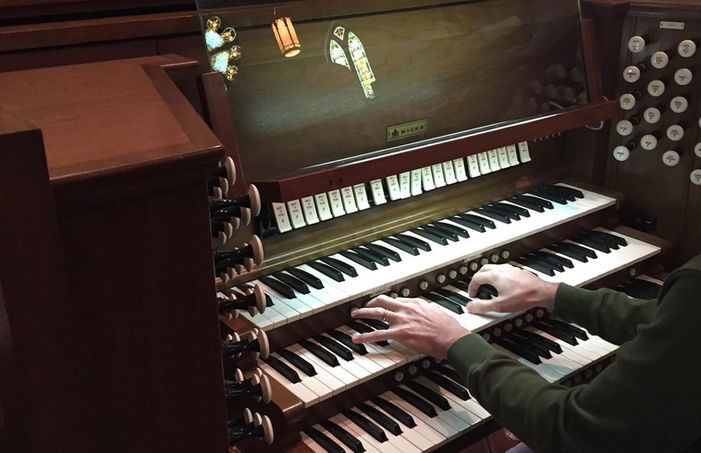Pipe Organ FAQ
Why are we getting a new organ?
The existing electronic instrument was made in 1993. Knowing that the amplifiers, speakers, and computers would eventually wear out, the Organ Committee was formed in 2015 to formulate a plan for its replacement.
Who are the Organ Committee members?
Brian Banks, parishioner, St. John’s
Joe Car, parishioner, St. John’s
Patrick Fischer (Consultant), Indiana University
Steve Keucher (Chair), St. Charles
Doyle Newquist, parishioner, St. John’s
Brent Stamey, St. Meinrad
Sarah Stamey, Director of Music, St. John’s
Chuck Peters, Assistant Director of Music, St. John’s
Why do we need a pipe organ? What’s wrong with what we have?
The electronic organ has a limited life span and plans have been made for its replacement. Although it is still in working order, we have a chance to acquire a pipe organ for free from a church that is closing, which represents a unique opportunity to own a higher-quality instrument that will greatly enhance our worship, and that will last for generations to come.
In Sing to the Lord: Music in Divine Worship, (United States Conference of Catholic Bishops, 2007), the pipe organ is described as the desired instrument to lead congregational singing. The sound is produced with air, naturally and organically as when we sing, providing the support the assembly needs in a way that amplifiers and speakers cannot.
What are the details of the new organ?
The organ is in St. John Lutheran Church, Richmond, Indiana. That congregation recently celebrated its last service after 175 years.
The organ was built in 1926 by the Wicks organ company, and enlarged and refurbished twice since then. It has three manuals (like our current organ), and 38 ranks of pipes. Ranks are matching sets of pipes, one pipe for each key on the keyboard. The organ contains approximately 2,800 pipes.
What is the process to install the organ in St. John’s?
There are several steps in the process of relocating and installing the organ. There will be opportunities to volunteer and participate in the project along the way:
--Dismantle, catalog, move and store the organ
--Refurbish the organ
--Remodel the left chancel area where the current instrument is located, to house the new organ
--Install and revoice the organ
Isn’t this expensive?
There will be an initial commitment just as there would be if we purchased another electronic organ. However, the quality and life span of the pipe organ make it a better value than the electronic organ would be. Everyone involved in the project is working to economize wherever possible, from moving costs to construction costs, and the final result is yet to be determined.
How long will a pipe organ last?
The frame, chests, and casework are made primarily of wood and leather, and the pipes are made of wood, zinc, lead, and tin. The wood and metal components will last for centuries. Leather needs to be replaced every 60 years or so, at a fraction of the original cost of the instrument.
Is it possible to give a memorial gift as the organ is installed?
Yes; there are many ways that a memorial gift could support the organ project:
--A naming gift for the entire instrument
--A memorial gift to support refurbishing a portion of the instrument; for example:
--The set of real chimes within the organ
--The harp stop
--The Great chorus: the show pipes on the front of the organ that lead congregational singing
--The festival trumpet
Efforts will begin very soon to raise $200,000 to fund the pipe organ project.



